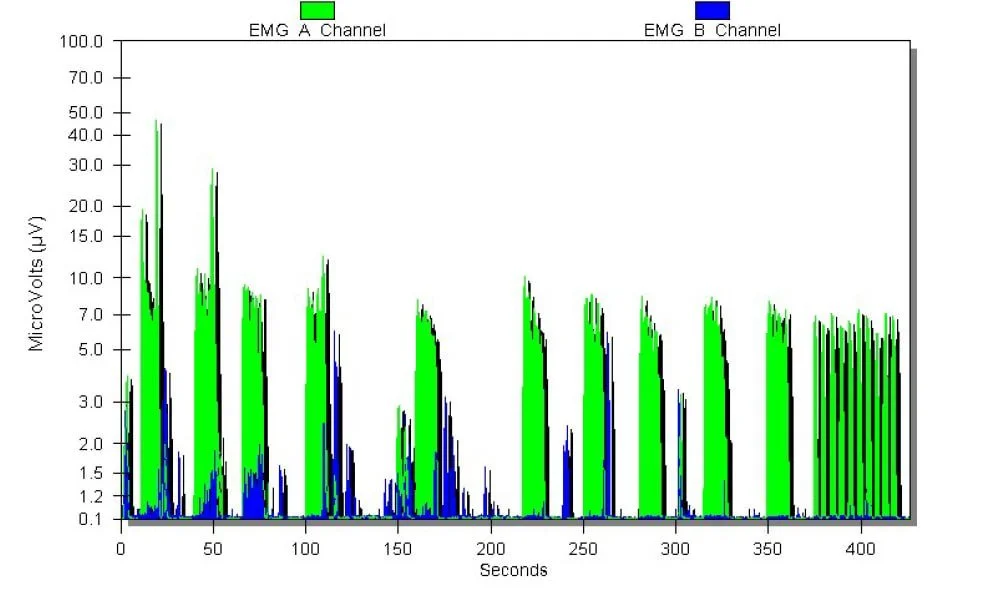Biofeedback Pelvic Floor Therapy in Burnaby, BC
Regain Control. Reduce Pain. Restore Confidence.
At Ova Women’s Health in Burnaby, we utilize advanced pelvic floor biofeedback to help you reconnect with your body, alleviate discomfort, and enhance function. Whether you're navigating postpartum recovery, pelvic pain, or incontinence, our evidence-based approach is personalized to your needs.
What Is Biofeedback?
Biofeedback is a non-invasive, evidence-based therapy that helps you learn how to identify and control your pelvic floor muscles. Using sensors placed either externally or internally, we monitor muscle activity and translate it into visual or auditory cues. This real-time feedback helps you understand when your pelvic floor is contracting or relaxing — a powerful tool for both strengthening and releasing.
Who Benefits from Biofeedback?
We recommend pelvic floor biofeedback for individuals experiencing:
Overactive pelvic floor
Pelvic floor dysfunction from surgery or trauma
Is Biofeedback Right for You?
While some clients are referred specifically for biofeedback, not everyone requires it. As pelvic health professionals, we begin with a comprehensive initial assessment to determine whether biofeedback is the most appropriate treatment for your condition.
Many pelvic floor concerns can be addressed through other physiotherapy techniques. If biofeedback is not suitable or necessary, we will guide you toward the approach that best supports your healing and goals.
How Biofeedback Works: Step-by-Step
Initial Assessment: We begin with a thorough evaluation of your pelvic floor using physical assessment and/or internal sensors.
Sensor Placement: Vaginal or anal sensors, or surface electrodes, are gently placed to monitor activity.
Live Feedback: You will see or hear signals that correspond to your muscle engagement.
Guided Training: We guide you through relaxation or contraction exercises tailored to your specific condition.
Progress Tracking: Your muscle activity is recorded over time to adjust your program and maximize results.
What to Expect & How to Prepare
Before Your First Session:
Wear comfortable, loose-fitting clothing.
Bring a list of medications and any medical history.
Please shave the area where the sensors will be placed (typically around the perineal or anal region), as this helps ensure accurate readings and better sensor contact.
No examination is performed without your consent.
Session Duration:
Initial session: 60
Follow-up sessions: 45–60 minutes
Frequency of Treatment:
It depends on the patient's condition and the pelvic floor physiotherapist's assessment.
What Are the Benefits?
Enhanced control over pelvic muscles
Reduced leaking or urgency
Decreased pelvic pain and tension
Improved sensation and coordination
Objective tracking of muscle engagement
Empowerment through visual learning
Clinical studies confirm that biofeedback improves outcomes when combined with pelvic floor physiotherapy, particularly for incontinence and chronic pelvic pain.
Internal vs. External Biofeedback: What’s the Difference?
At Ova Women’s Health, we offer two types of biofeedback assessments. The difference between them comes down to the type of sensor used.
Internal Sensor Biofeedback — $340
This method uses an internal sensor that is assigned specifically to you and can be reused for all future internal biofeedback sessions.
Internal sensors provide the most accurate and detailed measurements of pelvic floor activity, allowing us to observe deeper layers of muscle tension, activation, and relaxation.
*One added benefit:
Because the internal sensor is reusable, you only need it once.
All future internal biofeedback appointments are billed at your regular follow-up rate, making this option more cost-effective if you plan to return for multiple sessions.
External Sensor Biofeedback — $245
This assessment uses single-use adhesive sensors placed on the skin.
It is completely external, comfortable, and does not involve internal insertion.
Because these sensors are disposable and used once, each session remains at the external biofeedback rate.
Common Questions (FAQ)
Does it hurt?
Not at all! You should not experience any pain or discomfort throughout your session. Biofeedback is safe and non-invasive. You may feel mild pressure if internal sensors are used, but we prioritize your comfort.
How quickly will I notice improvement?
Biofeedback significantly accelerates patient improvement, frequently observable after just one session. Nonetheless, the degree of overall enhancement is firmly dependent on the patient's dedication to the treatment plan.
Is it covered by insurance?
If your insurance plan includes physiotherapy, biofeedback is often covered. We offer direct billing to most insurance companies and can provide detailed receipts for submission.
Can anyone use biofeedback?
It is generally safe for most people, including postpartum and menopausal women. We will assess your suitability during your initial session.
Physician Reports Available
If your doctor has recommended biofeedback as part of your treatment plan, we’re happy to provide detailed progress reports. These reports can support interdisciplinary care, guide referrals, and help ensure continuity across your healthcare team. Please let us know if a report is required during your sessions.
Ready to Start?
Biofeedback therapy at Ova Women’s Health in Burnaby is grounded in science and delivered with compassion. Whether you're postpartum, menopausal, or managing chronic symptoms, we’re here to help.
Book your appointment today and take the first step toward pelvic health.
Need to Be Seen Sooner?
Considering that certain conditions, such as severe pelvic pain, Vulvodynia, constipation or clogged milk ducts, can be urgent and unexpected, if you’re unable to find an available appointment in our regular schedule, you can book one of these options to ensure timely access to care:
Priority Appointments – Internal Sensors $385 | External Sensors $285
Priority Appointments are available Monday to Friday, outside of regular clinic hours. They are open to anyone who wishes to be seen sooner, whether for a check-up, follow-up, or personal need. Instead of waiting 3 to 4 weeks, you’ll typically be seen within 1 to 3 days. These sessions are not considered emergency care, and no urgent condition is required to book.
Emergency Appointments – $485
Emergency Appointments are reserved for urgent clinical issues—such as severe pelvic pain or Clogged Milk Ducts—that require immediate attention, especially when no regular or priority appointment is available. These sessions are booked on weekends, holidays, or when the clinic is officially closed. To book an emergency appointment, please send us an email at info@ovawomenshealthphysio.com.

